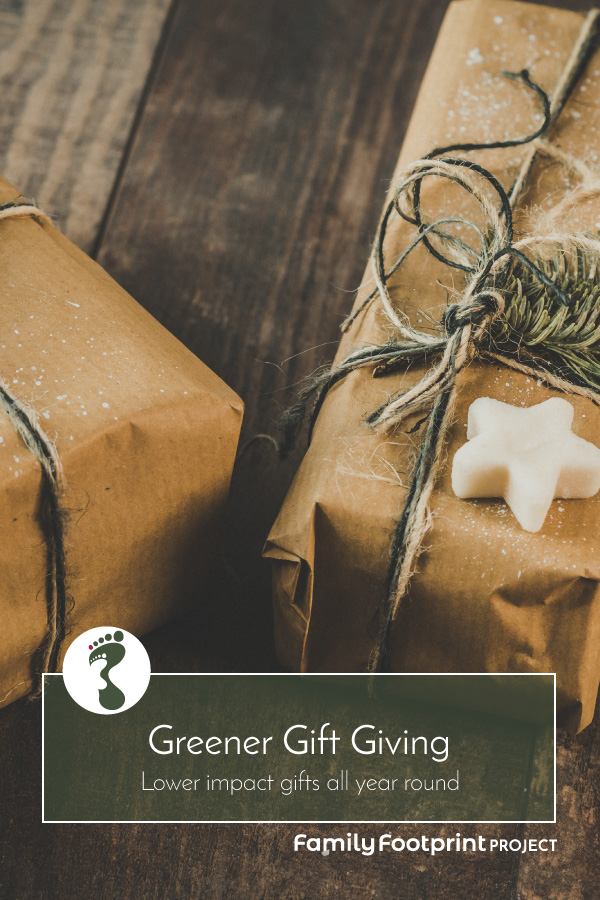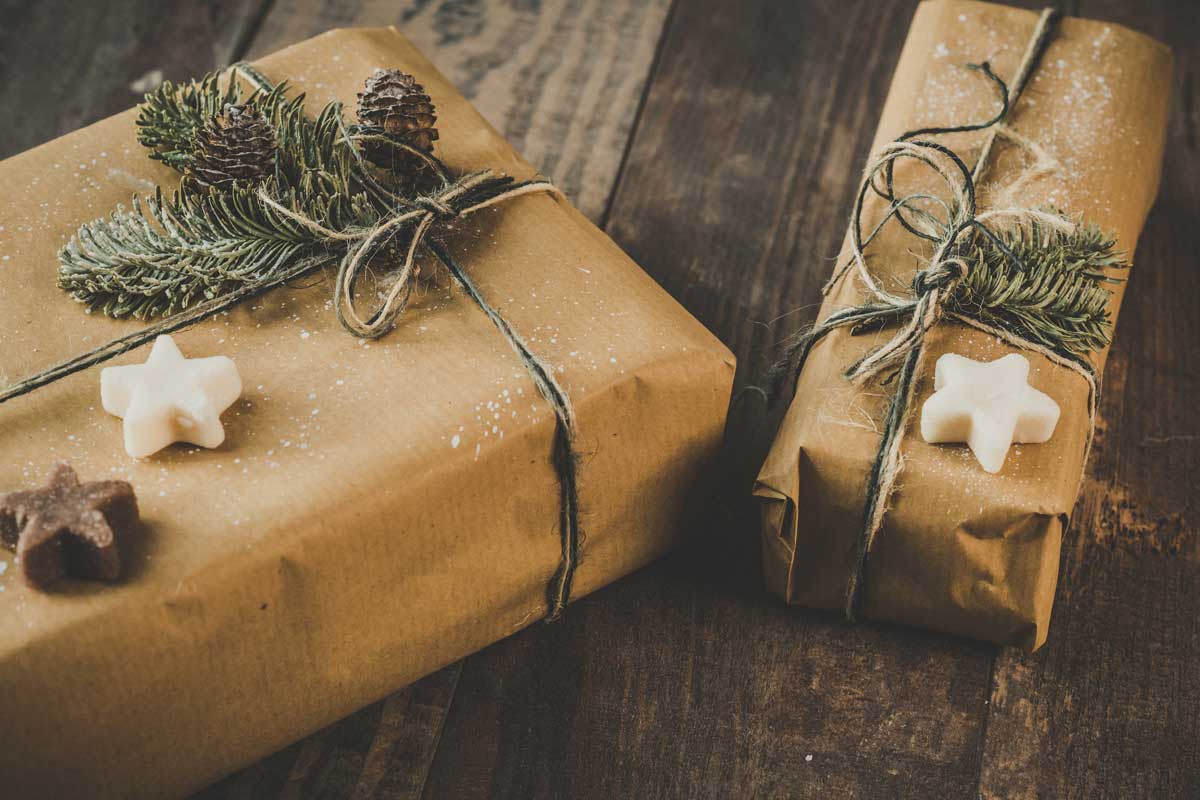I touched on greener gift giving in my lower footprint Christmas post but it is a big and important topic. It also has relevance not just at Christmas but throughout the whole year. It deserves a post of its own.
The age of your children will certainly influence how you approach gift giving in your household. My children are now all teenagers so they understand and are generally on board with our stance to reduce excess and waste, particularly at Christmas time. Plus they no longer have a long wishlist of toys (unless we are talking about the tech kind!) That said, we have always been fairly conservative in the number and value of the gifts they receive at Christmas and for their birthdays so this is their ‘normal’. We have always tried to emphasise the non-material aspects of celebrations with them and, fortunately, our extended family have too. The waste reducing principle of REDUCE is definitely relevant to greener gift giving.
Gift giving, however, is a joyful thing. Hands down the best part of my Christmas morning is not opening my own gifts. It is watching my loved ones open gifts that I have taken particular care to choose for them. I don’t think I will ever forget the Christmas after my husband had had to sell his family home following the death of his parents. I bought him a set of cufflinks on Etsy. They were engraved with the latitude and longitude coordinates of his home address. I watched him ponder them for a second before the tears welled up as he realised what they were. Bringing that joy (even when tinged with sorrow) is what Christmas and birthdays is all about for me.
So, how can we give meaningful gifts in a lower impact way?
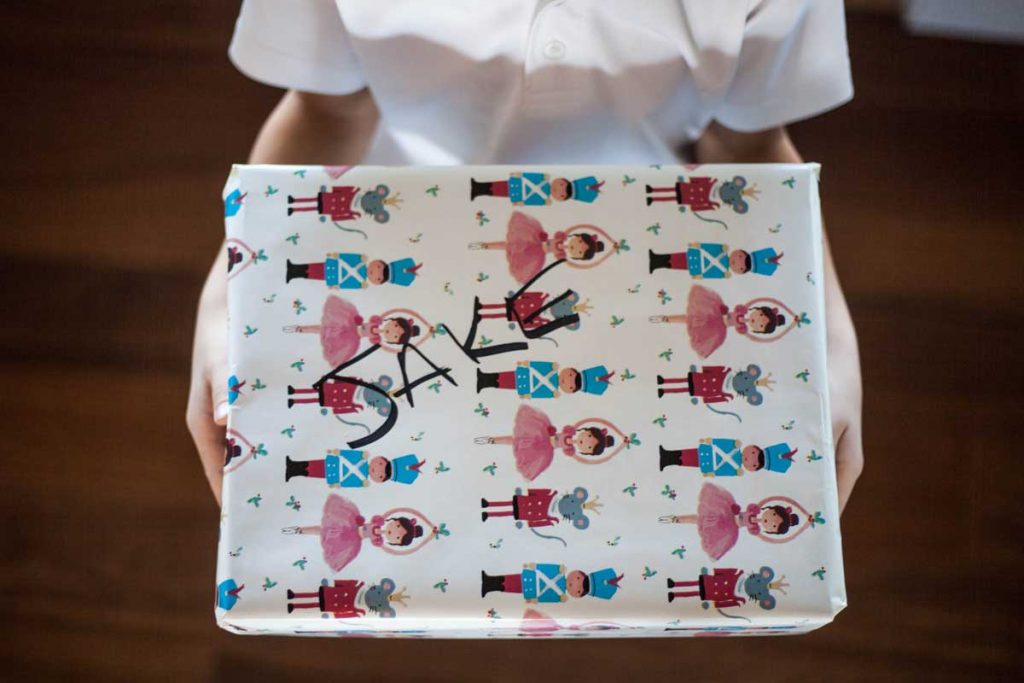
Give Suggestions
Some people feel that it is impolite to ask for particular gifts. I don’t agree. I think it is beneficial to give suggestions about what you would like to receive. Most of us would gladly give a gift that we know is desired rather than an unwanted gift. We don’ want to waste money and waste resources. Nor do we want to add to the clutter (and guilt) in people’s homes or to the pile of unwanted goods in secondhand stores. Or, worse, the tip.
For those that don’t know us well – or simply have different tastes from our own – a list of suggestions is welcome. In our family, although we encourage suggestions, we also know that surprises are welcome. Of course, had the cufflinks I gave my husband not been a surprise, they would not have brought the same joy for giver and receiver as they did. Suggestions are just that – suggestions.
Exchange Gifts Secret Santa Style
The adults in our family have long done a random gift exchange (often called a Kris Kringle or Secret Santa) at Christmas where we each give and receive just one gift. The gifts in our exchange are of a higher value than would be a single gift given in the usual manner but this doesn’t need to be the case. The value of the gift can be set in any way your family see fit.
Tip: We organise our gift exchange with Elfster. This platform allows names to be drawn secretly and also has a wishlist function so we can share our suggestions with our anonymous giver.
A major advantage of this style of exchange, other than reducing the cost of Christmas, is reducing the excess of presents that, let’s face it, adults rarely need.
The platform we use for organising our Kris Kringle is Elfster, and I’m sure there are others. It is great because it also allows us to give suggestions and for the giver to mark an item off as bought (without the recipient knowing). This avoids double ups. It is powered by advertising of course but you can ignore that. Add things to your wishlist from your chosen website or just using text to describe what you would like. This is beneficial because the waste of unwanted gifts is minimised. We do stress in our family, however, that surprises are also welcome! And the wish lists are available all year long so it can be helpful for birthdays too.
One year recently we did a fun version of this at a pre-Christmas party with close friends. On this occasion, none of the gifts were allowed to be bought new. They could be made, regifted or bought from a secondhand store and had a very strict low budget. It was really fun – and funny!
Gift Ideas
Experiences
Consider buying ‘experience’ gifts rather than material things. Research has shown that the clutter in our lives can have a detrimental effect on our physical and mental health. In fact, we get more happiness from our experiences than the things we own. There are experiential gift options for just about any budget, from movies to hot air balloon rides. Think of massages, classes, theatre tickets, a night at an eco-resort. The options are vast. You might need to throw in the babysitting too.
Practical
Physical stuff can sometimes be very welcome though. Think of a young person setting up their first home. There are many practical things that they might welcome. Perhaps bath towels to a sandwich press (toasted sandwiches are a share house staple food!)
Gift Vouchers & Cash
I know gift vouchers and cash can seem like cop out gifts. Allowing the recipient to purchase precisely what they want, however, is a surer way to avoid waste than guessing what they might like. I like to think I’m pretty hip but I’m sure my teenage nephews would think differently. (Just saying, “I’m pretty hip” probably proves I’m not!) I’d much prefer to give them the opportunity to buy something they really want. They will probably throw that cook/lame t-shirt in the back of their cupboard never to be worn.
Furthermore, just about every shop offers gift vouchers these days. It is possible to choose one perfectly suited to the recipient’s interests rather than a general department store one. A carefully selected voucher shows you’ve thought about what they would love but want them to be able to choose exactly what they want or need. For example, I always love to receive a gift voucher to buy art supplies. My family knows I love to create but they may not know exactly which supplies I already have. Or what media I’m planning to dabble in next!
Try to avoid the plastic card vouchers though. Buy online and have the electronic version it emailed. You can email it direct to the recipient or to yourself if you want to give it in person.
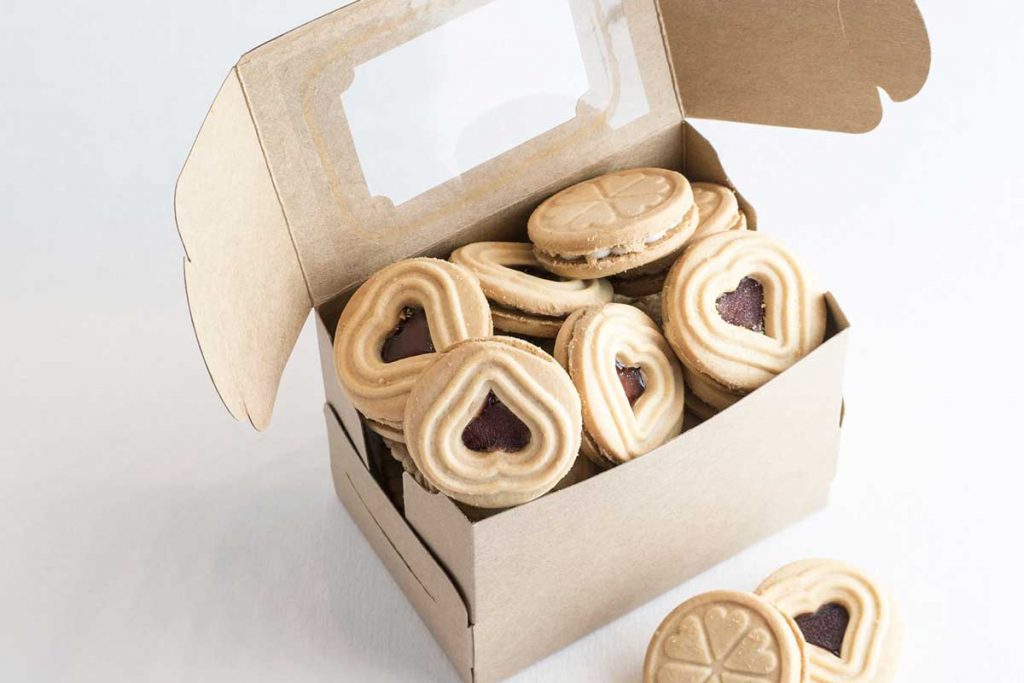
Consumables
Consumable gifts help to avoid the clutter issue, being designed for use and not for keeps. If well selected, they can be a low waste option too. Look for things packaged in reusable, recyclable or compostable packaging. Also look out for things produced locally and handmade.
Consumables come in many different forms. They could be ready-to-eat tasty food such as a delicious lemon butter. They could also be gourmet ingredients for the home chef such as a spice rubs or smoky salt. The options don’t end in the kitchen though. Pamper products such as bath salts and hand creams come to mind but also vegetable and flower seeds for a gardener or yarn for the keen crocheter or knitter. You get the idea.
Homemade or Handmade
Of course many consumables can be made at home. Why do we under value things we make ourselves? If a handmade item bought from Etsy or a market is a suitable gift (and they definitely are!) then why not something we have made ourselves? When it comes to greener gift giving, homemade gives us complete control.
Giving homemade does assume we have the skills (and time and inclination) to make a good quality product. If that isn’t the case, look out for unique and interesting handmade products in local stores and markets. They are more likely to have been made in a sustainable manner, possibly with less packaging and without the costs associated with transport and mass production. Plus you’ll be supporting an independent small business.
Regifting & Secondhand
Another option that is out of favour is regifting and giving secondhand. Why is this? It is thought of as cheap and that new items have more value. I think we need to challenge this thinking. We need to be more determined about reusing the resources we already have rather than constantly producing more and dumping what isn’t wanted into landfill. People collect antiques, spending thousands and putting great value on them but they are, by definition, secondhand. I think we need to give equal value to a secondhand item as we would the new version. Often there is no material difference between them.
So why not look for gorgeous or retro or trendy gifts in quality secondhand stores? There are many highly curated secondhand stores selling very good quality items which would be perfect for greener gift giving. There are also many items that could be upcycled or augmented into gorgeous gifts too. For example, a vintage tea cup filled with wax to make a candle.
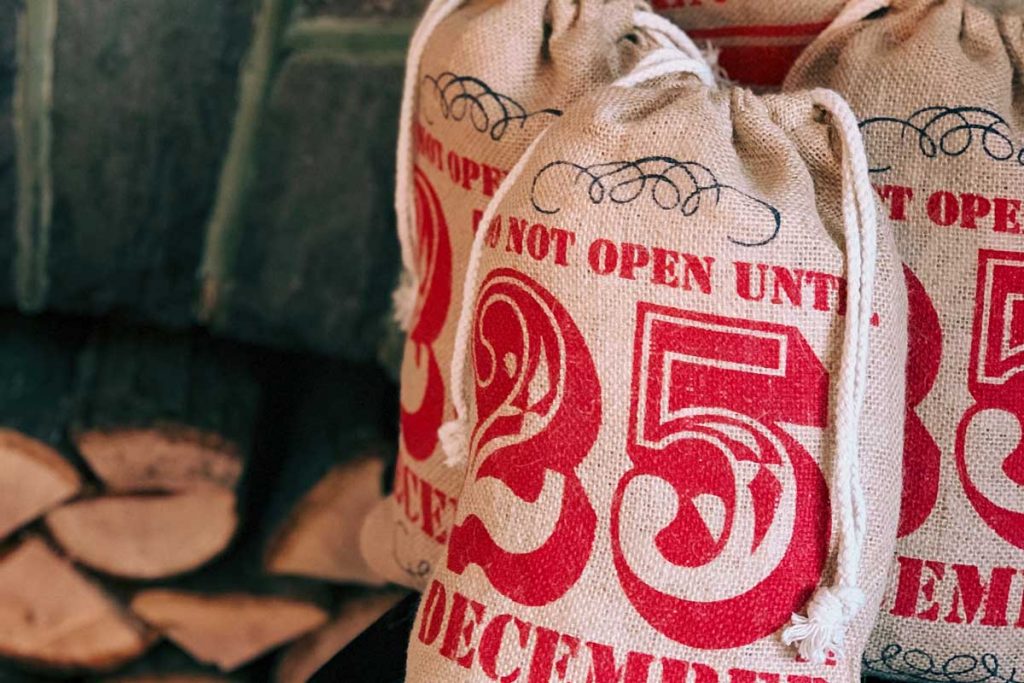
Final Thoughts on Gifts
Opt for durability. Buy gifts that will last and be used for years to come rather than items with in-build obsolescence or that will break quickly and end up in landfill. For example, buy toys made from durable materials that will end up being kept for future children and generations to come.
Go plastic free. Wherever possible, buy items that are made from materials that can either be recycled or composted. For example, buy the hand cream in a glass jar rather than a plastic tube or wooden toys over plastic ones.
Say no to batteries. Look for gifts that don’t require batteries. Although batteries can be recycled, many end up in landfill and leach incredibly toxic chemicals into the soil. Rechargable options are, of course, available but in my experience when the kids want fresh batteries for their toys, they are not willing to wait for the batteries to charge up. They want to play NOW.
Over packaging. Over packaging seems to be the norm these days. It is the enemy of greener gift giving! Where you have the choice, choose the less packaged or recyclable packaging option.
Online shopping. It is hard to beat the convenience of shopping from home but often things that go through the post have a lot of plastic protecting them for the journey. Ask for no plastic with your order.
A word on wrapping. A lot of gift wrap paper and ribbon is not recyclable. They contain plastic in coating or ‘foil’ layers. Look for wrapping options that are recyclable or, better still, reusable such as gift bags or fabric. Imagine the waste that would be avoided if every family had a set of reusable fabric gift bags that were used year after year.
Greeting cards. It is usual to at least add a gift tag to a gift. An alternative is to write your greeting directly on to the wrapping. If you do want to give a physical card, look for ones that are recycled paper and are recyclable. Many have inclusions such as glitter that make them not recyclable. Or make your own from recycled materials. Kids’ artwork can make lovely cards.
Your thoughts
I hope you have found some useful ideas for greener gift giving in this post. I’d love to hear your thoughts. Can you add to my list of greener gifts? What do you think of homemade and secondhand gifts? How does your family aim to reduce waste in this area? Leave your comments below.
[mc4wp_form id=”96″]
